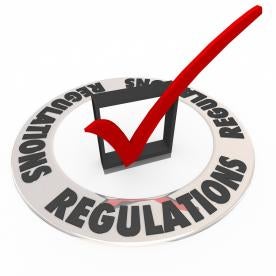United States
California Proposition 65 – State Regulation Update
Starting on August 30, 2018, consumer products to be released into the California marketplace must meet new requirements under California’s Safe Drinking Water and Toxic Enforcement Act of 1986, known as Prop 65. The California Office of Environment Health Hazard Assessment (OEHHA) issued a notice on December 6, 2017, approving amendments to the “clear and reasonable warnings” regulations under Prop 65 and clarifying and correcting sections of the new regulations adopted in August 2016.
Prop 65 was enacted with the goal of protecting California’s drinking water sources from being contaminated with chemicals known to cause cancer, birth defects or other reproductive harm, and requires businesses to inform consumers in California about exposures to such chemicals. Prop 65 also requires the Governor of California to publish and periodically update a list of known carcinogens and reproductive toxins. That list, available here, contains almost 1,000 substances to date.
As discussed in a previous update, on August 30, 2016, the California Office of Administrative Law approved the adoption of new regulations for clear and reasonable warnings under Prop 65. These new regulations require businesses with 10 or more employees to give “clear and reasonable” warning to California consumers before knowingly and intentionally exposing them to known carcinogens or reproductive toxins. The warnings must provide more detailed information to the public, including a clear statement that a person “can be exposed” to a Listed Chemical, the names of the Listed Chemicals that are the subject of the warning and a link to a website maintained by OEHHA containing supplemental information. There are also safe harbor warning methods for internet and catalogue sales, requiring that businesses provide the warning on the webpage or in the catalogue, as well as on the product.
The new regulations also clarify that the manufacturer, producer, packager, importer, supplier or distributor of a product must provide a warning by written notice which identifies the exact name or description of the product requiring a notice and encloses all necessary warning materials such as labels or labelling, and warning language for products sold on the internet for the product at issue. The December 6, 2017, notice clarified that a warning label may be affixed to the product, printed directly onto the product or its immediate container or wrapper, or provided to an authorized agent for retail sales. The notice also clarifies that a “package insert” is an acceptable form of labeling and that shelf tags are not a clear and reasonable warning method for most types of product exposures.
The written notice must be renewed annually, or within 90 days when a different or additional Listed Chemical or endpoint (cancer or reproductive toxin) needs to be added to the warning. The retailer is then responsible for the placement of the warning materials, particularly if the retailer is selling the product under its own brand, the retailer itself is responsible for introducing a Listed Chemical into the product or the retailer has covered, obscured or altered a warning label affixed to the product.
Warnings on products manufactured before August 30, 2018, that comply with the current regulations are still considered clear and reasonable. Under the current regulations, a warning is “clear” if it effectively communicated that the Listed Chemical in question is known to the State of California to cause cancer, birth defects or other reproductive harm. A warning is “reasonable” if the method used by a business to transmit the warning is reasonably calculated to make the warning message available to the individual before exposure and, for a consumer product, before purchase.
Companies should continue planning for the changes to ensure all products for the California market are in compliance with Prop 65 when the new regulations come into effect on August 30, 2018.
Estate of Alexander Calderwood v. ACE Group International LLC – Interpretation of Delaware LLC Agreements
On December 14, 2018, a unanimous panel of the Appellate Division, First Department in New York affirmed the dismissal by the Commercial Division of the causes of action against ACE Group International LLC (AGI). The decision, Estate of Alexander Calderwood v. ACE Group International LLC, affirms that Delaware business law permits parties to set the terms of an LLC’s operations through contract. Provisions of Delaware’s LLC Act did not override contrary terms in AGI’s operating agreement.
This decision emphasizes the important ability of parties to draft their own rules in LLC agreements under Delaware law. While the Delaware LLC Act supplies certain default rules, the operating agreement expresses the needs of the parties and will generally govern.
EEOC Employer-Sponsored Wellness Decisions – Federal Decision Update
In a previous update, we discussed the August 2017 decision by the D.C. Circuit that incentives offered to employees in connection with employer-sponsored wellness programs run afoul of regulations protecting the collection of sensitive medical information from employees. In that case, the American Association of Retired Persons (AARP) argued incentives to join employer-sponsored wellness programs were contrary to the laws protecting personal health information and were inconsistent with requirements that such participation must be voluntary.
As a quick reminder, employer-sponsored wellness programs are popular in many work places as a way to promote employee health and lower healthcare costs. The Americans with Disabilities Act (ADA) and the Genetic Information Nondiscrimination Act (GINA), however, generally forbid employers from requesting personal health information from employees outside of narrow exceptions for disclosure during an employee’s voluntary participation in a program.
On August 22, 2017, the federal judge sided with the AARP and held that the authorization of incentives for participation in employer sponsored wellness programs was arbitrary and capricious. The judge ordered the EEOC to revise the rule to ensure that incentives and penalties do not render participation in a workplace wellness program “involuntary.” The judge ordered that the current rules would remain in place while the EEOC prepared a revised version of the rules.
On December 20, 2017, the federal judge revised his August order at the request of the AARP and announced that the EEOC rules would be vacated as of January 1, 2019. The revised order also required the EEOC to provide the court with a status report by the end of March 2018 and to issue a notice of proposed rulemaking by August 30, 2018.
The EEOC challenged the revised order’s requirement that the agency issue “any notice of proposed rulemaking on a set schedule or file such notice with the court.” On January 18, 2018, the judge vacated the requirement that the EEOC issue a notice of proposed rulemaking by August 30, 2018, but the remainder of the revised order still requires the EEOC to file a status report by the end of March and the wellness program rules will be vacated on January 1, 2019. Employers may continue to follow the current rules until they are vacated on January 1, 2019. The EEOC may propose revised rules, but the agency has noted it is under no obligation to do so and it could take years to study the issue before issuing replacement regulations. In the interim, employers will need to keep an eye on the situation and ensure any employee wellness programs are permitted under the then-current rules.






 />i
/>i

